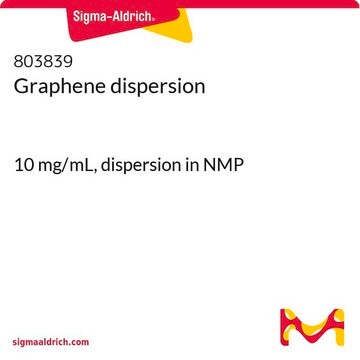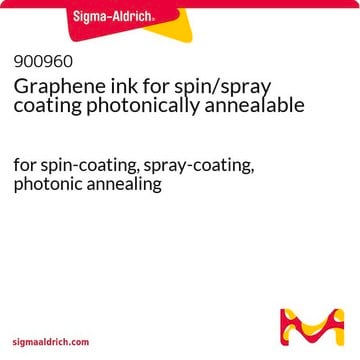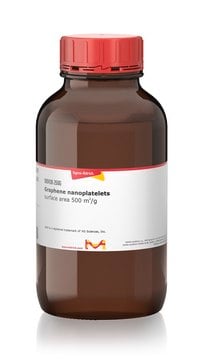902942
Graphite dispersion
few-layers (3-15 graphene layers), 1.0mg/mL in acetone-water, avg. no. of layers, 3 ‑ 15
About This Item
Recommended Products
description
Capacity:400−450 mAh/g
Conductivity: 1.0x10-3 − 1.0x10-5 S/m
I_D/I_G peaks ratio: <0.25 (by Raman)
Surface area: 1.0x105–4.0x106 mm²/g
form
dispersion
feature
avg. no. of layers 3 ‑ 15
composition
C: >96%, H: 0 −1%, N: 0 −1%, Oxygen: 0−2% (graphene)
General description
Application
- in the synthesis of graphene layer
- in the preparation of ruthenium catalyst for the synthesis of ammonia
- development of biosensors
- fabrication of multi-layer thin films for li-ion micro-batteries
Preparation Note
Signal Word
Danger
Hazard Statements
Precautionary Statements
Hazard Classifications
Eye Irrit. 2 - Flam. Liq. 2 - STOT SE 3
Target Organs
Central nervous system
Supplementary Hazards
Storage Class Code
3 - Flammable liquids
WGK
WGK 1
Flash Point(F)
5.0 °F
Flash Point(C)
-15 °C
Certificates of Analysis (COA)
Search for Certificates of Analysis (COA) by entering the products Lot/Batch Number. Lot and Batch Numbers can be found on a product’s label following the words ‘Lot’ or ‘Batch’.
Already Own This Product?
Find documentation for the products that you have recently purchased in the Document Library.
Customers Also Viewed
Our team of scientists has experience in all areas of research including Life Science, Material Science, Chemical Synthesis, Chromatography, Analytical and many others.
Contact Technical Service











